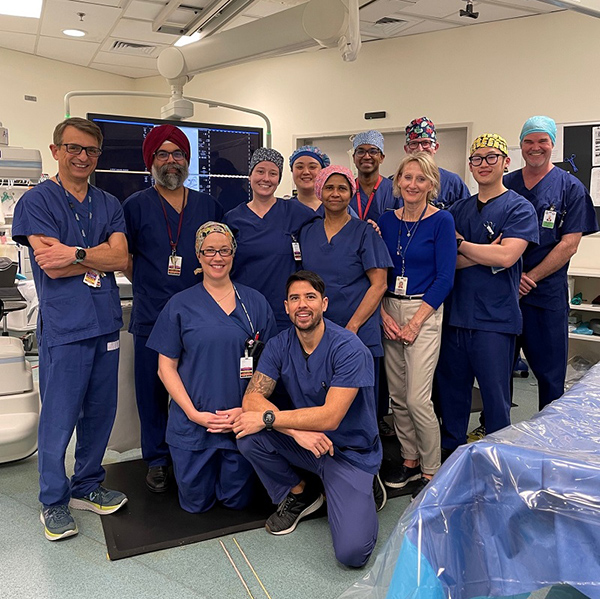Thanks to NIISwa during Stroke Awareness Week

This week is National Stroke Week with a focus on the SCGOPHCG Neurological Intervention and Imaging Service of Western Australia (NIISwa) and their incredible work for stroke patients.
Getting the best outcomes in stroke is a team effort and NIISwa works very closely with the departments of emergency medicine, imaging, neurology, anaesthesia, neurosurgery, ICU, and the specialty wards. In partnering with St John’s Ambulance and Royal Flying Doctor Service the service has been able to expedite the transfer of stroke victims as quickly as possible to NIISwa centres where a clot retrieval can be performed.
Last year the NIISwa team performed approximately 330 emergency stroke clot retrievals for the state, almost one per day, with an estimated 100 patients per year that avoided life-long care and dependency.
“The chances of a patient making a good recovery from a severe stroke and returning to their normal life are significantly better if they have a clot retrieval over having intravenous clot-buster treatment,” said Consultant Neuroradiologist Con Phatouros and Head of the NIISwa Department.
“Two patients per week avoid a care facility and can return to their normal life with intervention from our 40-strong team across the state,” he added.
Similarly patient outcomes for stroke from ruptured brain aneurysms treated with coiling have seen a significant improvement over the years. Last year approximately 300 brain aneurysms were also treated through NIISwa, at one of their four sites now in operation.
Footprints at SCGH, RPH, FSH and PCH all provide these life changing services, with SCGH the headquarter location and hub representing the quaternary neurosciences centre for the state.
“Our workhorse equipment is Biplanar Fluoroscopy Suites that allow us to track our instruments within the brain under image-guidance,” explained Con.
“These cost between 1 – 2 million dollars each.”
Mr Phatouros acknowledges the original efforts of Dr David Blacker and the Neurology Department, which established a code-stroke protocol allowing a parallel work flow to expedite the patient journey from door to lab imaging. He also applauds the SCGH executive and the Department of Health who have been very supportive and allowed the service to exponentially grow over the years, both in case numbers and the spectrum of patients that can benefit from the treatments.

